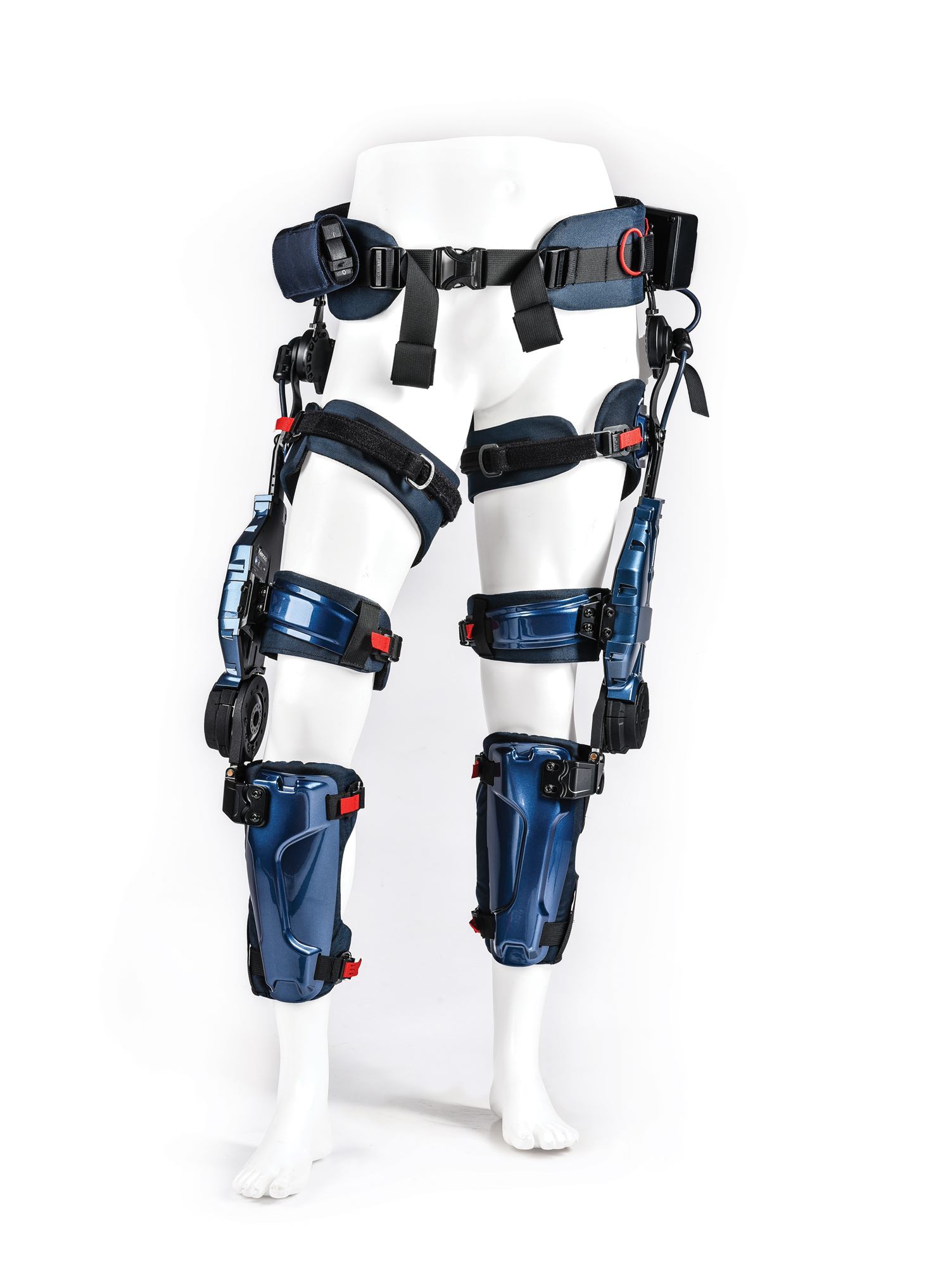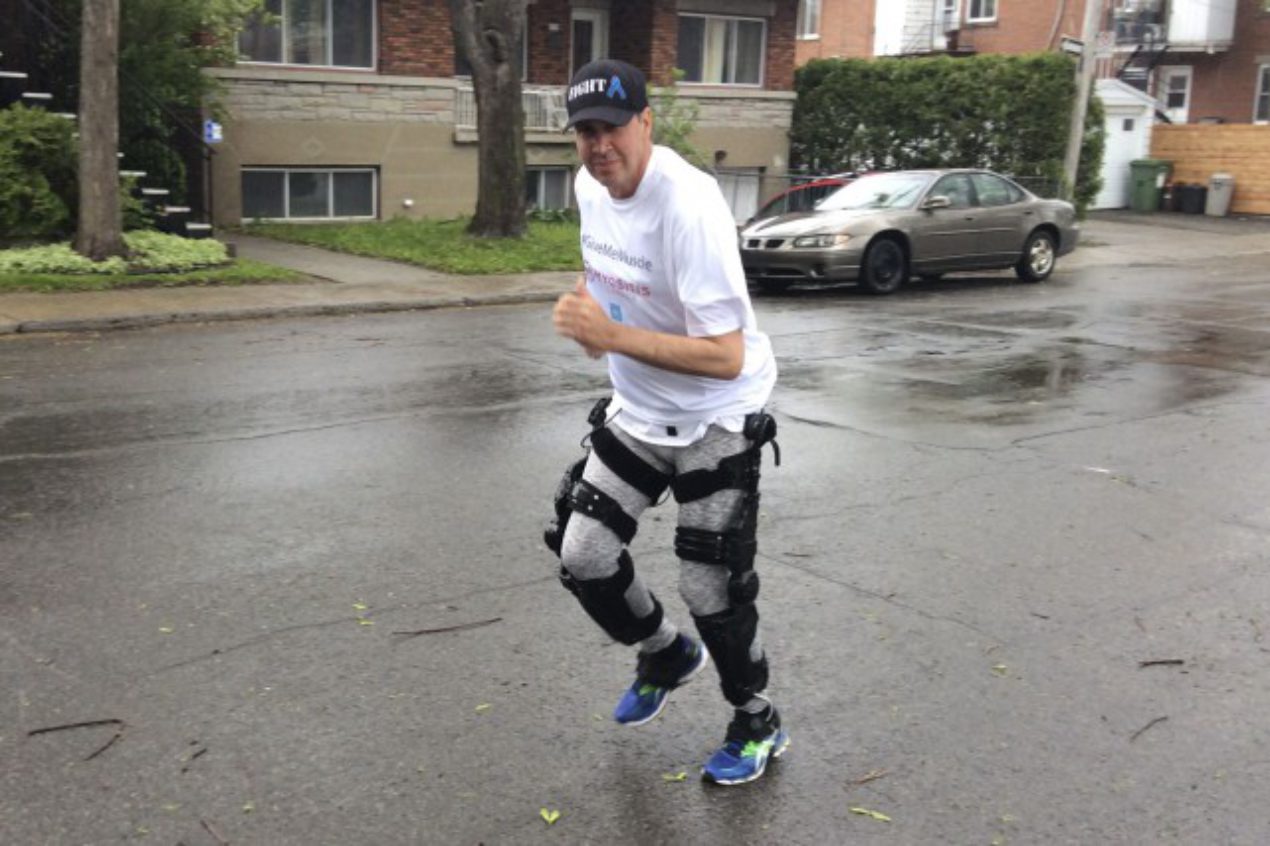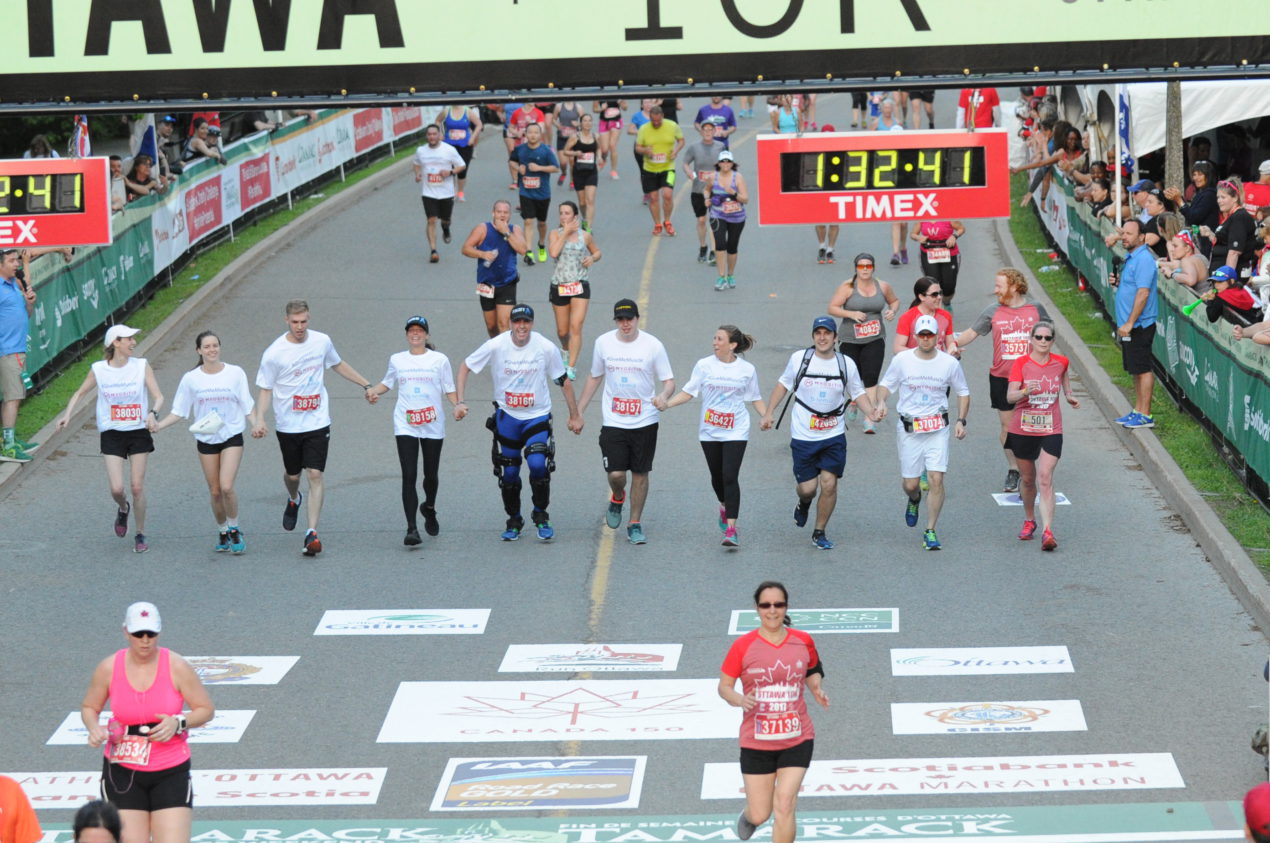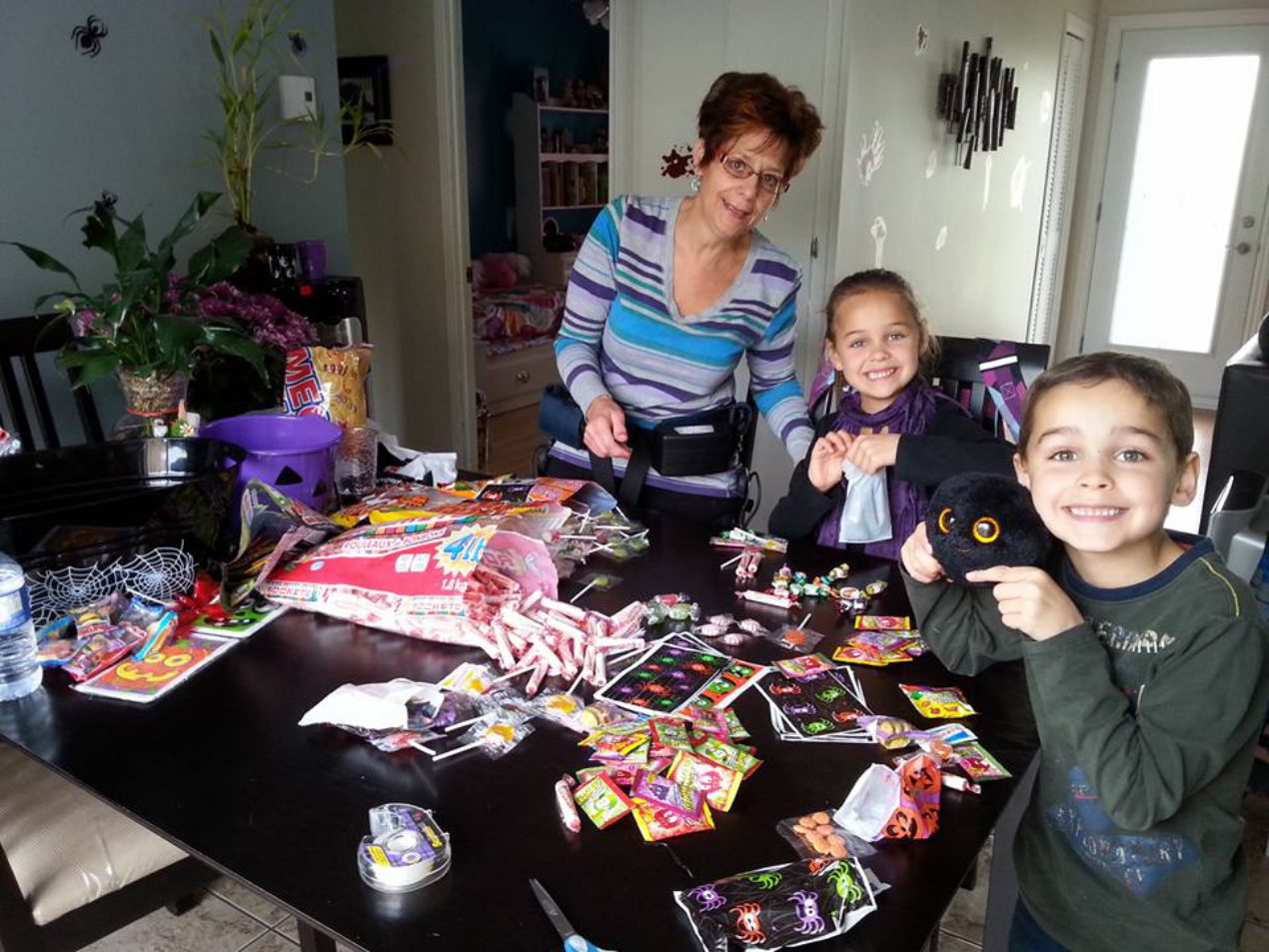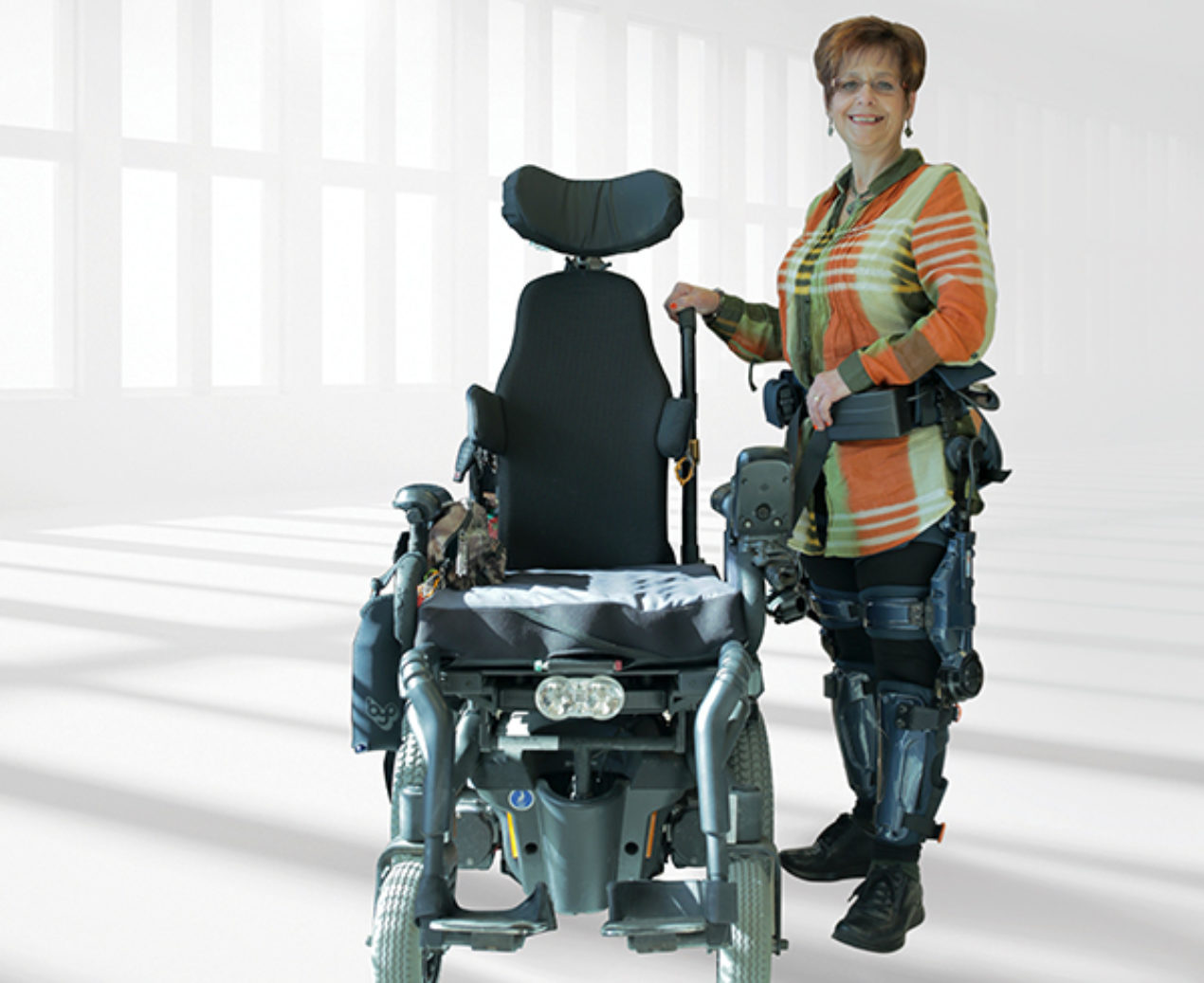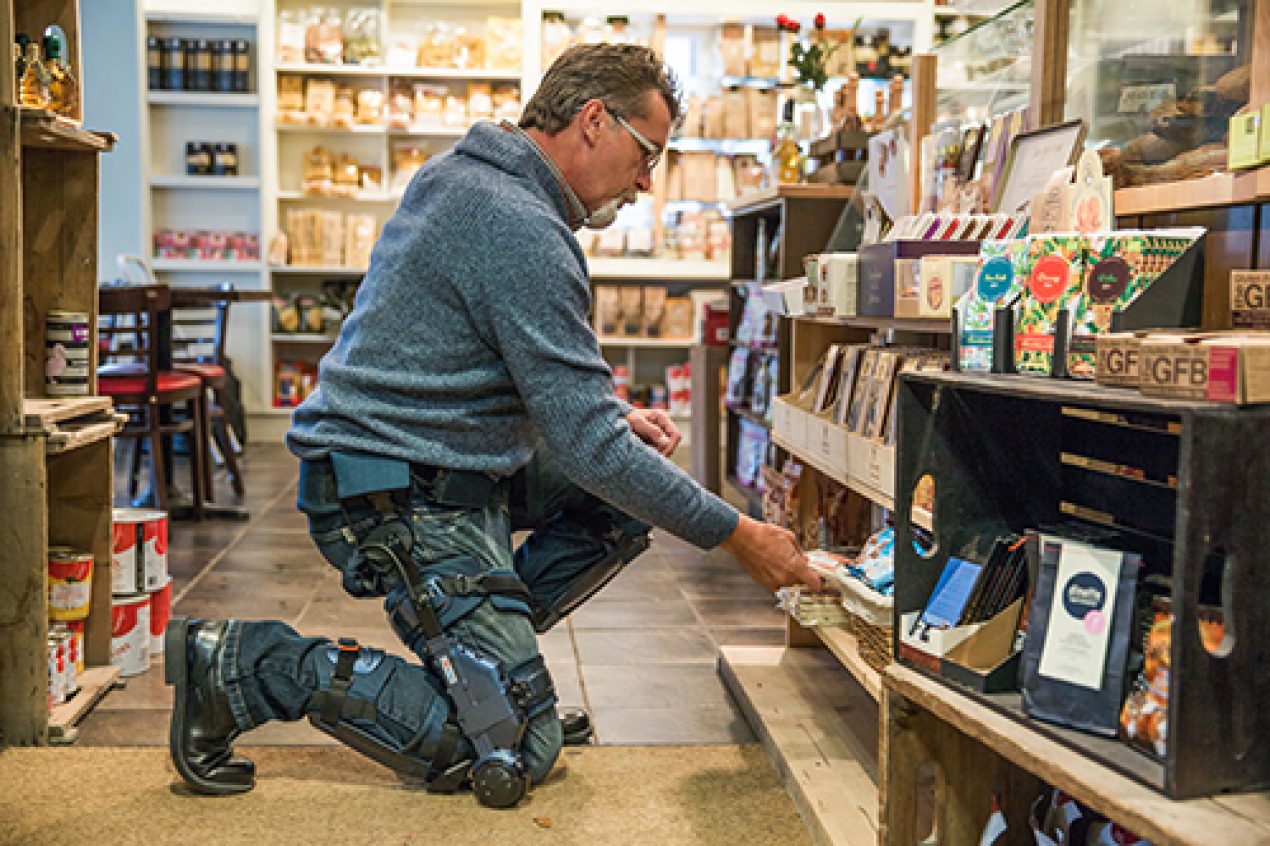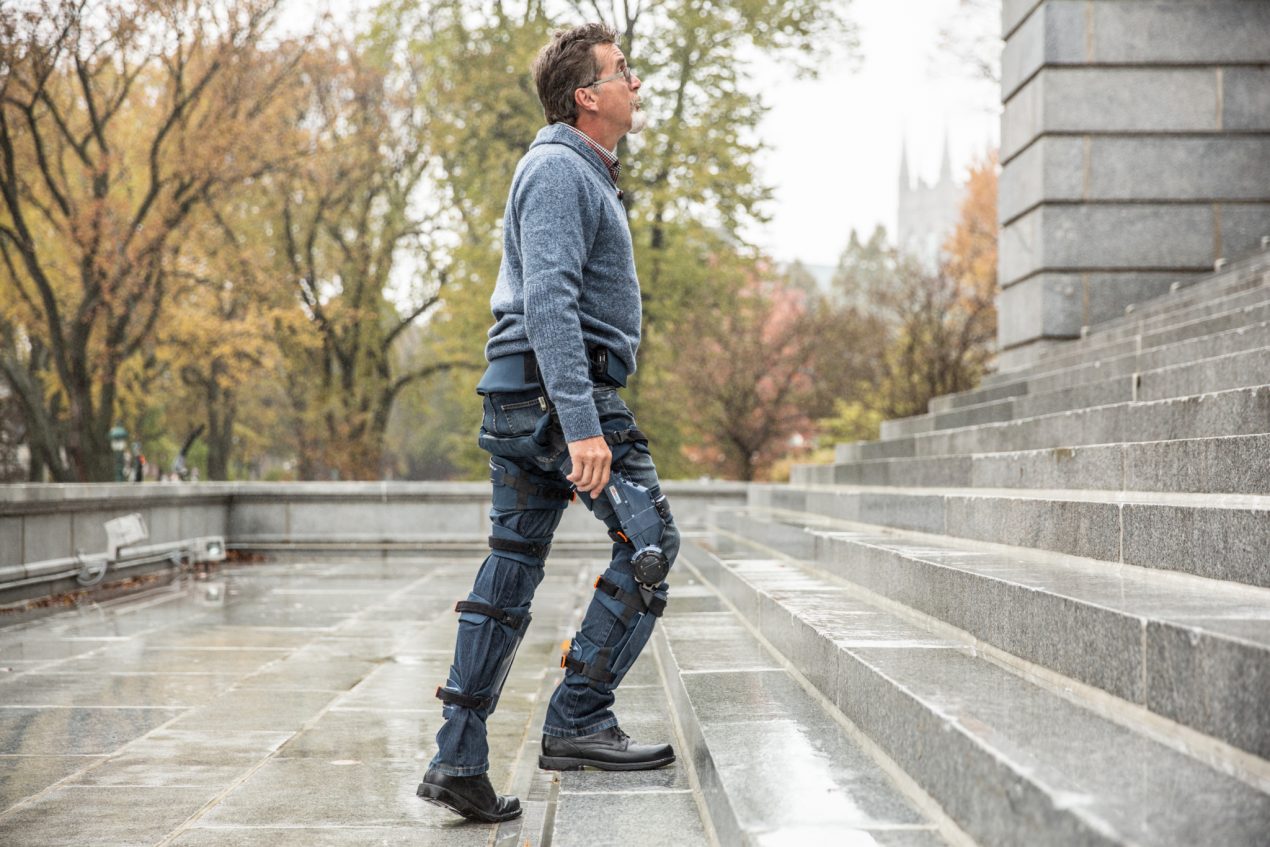
SMART Powered
Knee Orthosis
KEEOGO is a SMART Powered Knee Orthosis which can enable people living with Neurological Conditions to walk freely and more safely in their everyday lives.
SMART intuitive software ensures the wearer is always in control, providing assistance only when needed.
Learn moreDiscover KEEOGO
Adequate training by a clinical professional is required. Requires sufficient hip strength to initiate assistance.
Proprietary AI follows user movement across activities of daily living— walk, run, sit, stand, stairs, and ramps. Where you go it follows.
Comfortable padding and lightweight carbon fiber shells hug the body.
Powerful battery can be swapped on the go.
Motors at the knees help when needed.
Now Better Than Ever KEEOGO Clinical Benefits
-
Improved knee strength & stability
-
Reduced knee pain
-
Improved walking capacity
-
Enhanced movement quality & symmetry
With Keeogo you can:
- Have greater accessibility (e.g., climb stairs)
- Remain active
- Exercise more
- Keep up with the tasks and pace of life
- Correct walking deficits
The science Dermoskeletics: the science behind KEEOGO
B-TEMIA’s products incorporate our proprietary dermoskeleton technology.
Dermoskeletons are an advanced class of powered braces/exoskeletons that follow the wearer’s movement, assisting the user as needed.
What is Dermoskeletics?Personal and professional use Who is KEEOGO for ?
Personal Use
With KEEOGO you could regain your precondition mobility. You need some hip strength to use Keeogo and may need training to achieve your goals. Most KEEOGO users can now stand, walk longer, go up and down stairs, kneel, even dance or go back to work wearing it. Speak to your medical professional or click this link to see if Keeogo can help you.
Learn more
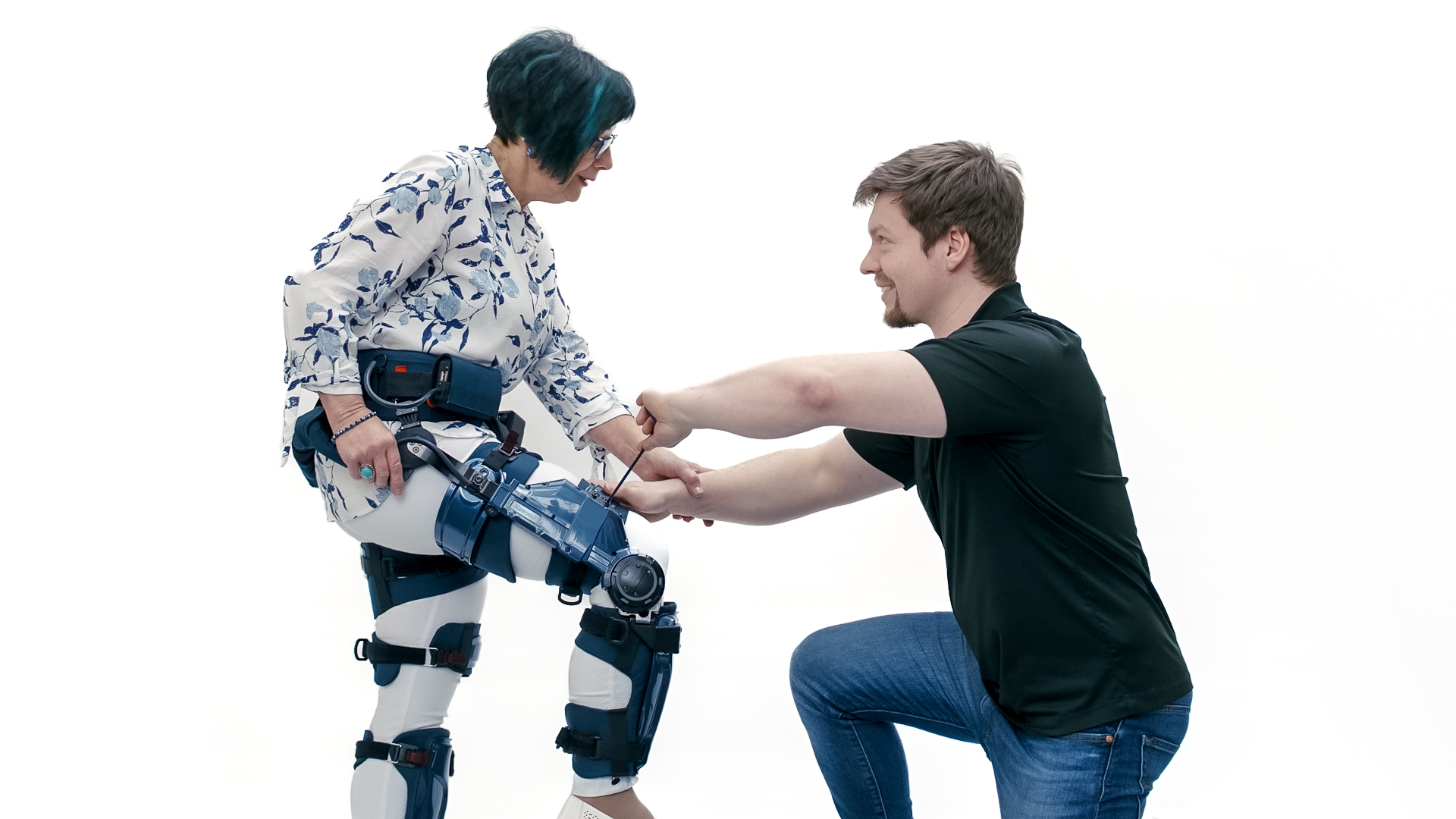
Professional Use
KEEOGO can provide many benefits as a rehabilitation tool in your clinic. It will provide additional strength, support and help facilitate exercises. It stabilizes, mobilizes, and relieves pain at the knee. It also cues healthy gait patterns and provides performance feedback to reinforce gait training. Click here to find out if KEEOGO could be of benefit in your clinic.
Learn moreMartin
Living with muscular dystrophy, myositis. Achieved his dream of running a 10K marathon, with KEEOGO
A hockey video specialist and a policeman at the Sûreté du Québec, Martin Jarry is also the father of two children. In April 2016, his life changed when he was diagnosed with Inclusion Body Myositis, a degenerative disease of the muscles that very rarely affects people under the age of 50.
Neuromuscular conditions affect more than 50 000 Canadians and have an impact on their mobility with many having to rely on assistive devices or a personal care assistant.
In 2017, Statistics Canada reported that 13.7% of the impaired Canadians had a disability that impacted their daily life activities. As mobility becomes challenging, it affects an individual’s integration with the community, hobbies, work, and sport practice.
Martin Jarry shares his story about his journey living with myositis and the impact on his mobility.
“Mobility. A benefit we don’t value until we know it’s threatened. Especially when one has an active life-style as I had. Officer at the Sûreté du Québec, coach for a hockey team, father of two; my life was full of movement.
In 2016, I was 46 and I discovered that I was going to have to live with Inclusion Body Myositis, a rare degenerative neuromuscular disease with no cure. I felt like the sky had fallen over me. After the shock, I decided I had to look for information about this disease, to know it and somehow, try to manage it.
First symptoms of Inclusion Body Myositis are weakness in the limbs, simple movements you can’t do anymore, loss of mobility and autonomy in everyday activities. You can’t get back on your feet after you fall, having a shower gets complicated. After you’ve been diagnosed, you know it’s not going to get better; but you can choose to motivate yourself and use the time you have left as much as you can. That’s when I started my race against time.
I began looking for solutions – unfortunately, research on muscular dystrophy is essentially made in the US, not in Canada – and then I focused on looking for communities of people living with my condition, to give me strength. I decided to slow down the progression of the disease by taking care of my muscles with the help of a kinesiologist.
My quest reached its peak when I discovered an innovative walking assistance technology that helps people regain their mobility called KEEOGO for ‘Keep on Going’. It is a powered device and has advanced software to read and support my movements so I can walk longer, go up and down stairs without using the railing, and pick up something off the floor without falling. It was a chance to live with independence while having an incurable condition that was slowly weakening me.
I learned that it is designed and developed by a Canadian company, B-Temia Inc. in Quebec City. I reached out to them and had the chance to try the device…. I rediscovered what it was like to have my mobility back, and my autonomy too. I felt mentally and physically well again.
It allowed me to get the upper hand on my daily activities such as walking, running, climbing stairs, or getting back on my feet by myself. Last year, I ran a 10km race in Ottawa, to raise funds for Myositis Canada! And just as importantly, it lightened the burden of my family who constantly had to watch me.”
What’s great about KEEOGO is that the device does not move for you. It helps you do your movements, and allows you to go further than your own muscles alone could.
Johanne
Living with multiple sclerosis. Got back her ability to walk after 17 years of using a wheelchair
Married for 34 years, mother of two children and grandmother of two grandchildren, Johanne Landry has been in a wheelchair for 17 years because of multiple sclerosis. KEEOGO has enabled her to regain her life and gave hope to her entire family.
Johanne, an inspiring and devoted woman, was able to surpass herself when she realized the potential that KEEOGO represented for her and her loved ones. Her story began when her son told her about the device he had seen in a television report. At that moment, all this seemed almost unreal and she was not really convinced of its usefulness. It was only after nine months that she decided to test the device, and then everything changed. KEEOGO has literally enabled her to regain her life and gave hope to her entire family, since life has not always been easy for them.
Johanne wanted to do everything she could to get KEEOGO and use it in her daily life. At the beginning, her goals were to be able to walk again, to be autonomous, to be able to dance again with her husband and to enjoy the moments of life with her friends and her family. To do this, her son has created a socio-financing website for her and even organized a fundraising event to collect funds for the acquisition of the device.
For her, there was no price to regain her autonomy. As she said, “It doesn’t get any better in life.” Being a positive and motivated and woman appreciated by her loved ones, she has managed to surround herself with key people to achieve her goals. Moreover, Mr. Gilbert Chouinard, co-owner of the IGA Chouinard & Fils Inc., has agreed to support her by becoming the honorary president of her fundraising. When he saw her standing for the first time, he was immediately convinced to support her cause.
Being a woman who cares not only for her well-being but also for the well-being of others, Johanne’s goal is to do more activities and promote KEEOGO. In particular, she wants the government to recognize KEEOGO for reimbursement by the Régime d’assurance maladie du Québec, and to benefit all those who need it. That is what motivates her to get involved. According to her, KEEOGO is miraculous and it help her undertake her activities that were previously limited by the disease.
KEEOGO has literally enabled me to regain my life and gave hope to my entire family.
Raymond
Living with knee osteoarthritis. Walking without walker or cane
A veteran of the Canadian army since 1998, following an accident in 1994, Raymond Levasseur is severely affected by osteoarthritis and knee hyperlaxity. Prior to using KEEOGO , he was obliged to use a walker to walk around and his daily movements were limited. Now, he is proud to say he can live a real life instead of just surviving.
In patients diagnosed with arthritis, an estimated 37.1% of cases are due to osteoarthritis (OA), with the knee (29.4%), hip (12.3%), and knee/hip (28.7%) reported as common sites of joint pain. As a result of OA, patients typically experience increased levels of pain, which negatively affects daily activities such as walking, moving, and climbing stairs.
Raymond Levasseur is a Canadian Army war veteran who served for almost 20 years. This former military chef was well known for his athletic talents, ranging from running to high jump, for which he had won several gold and silver medals during Cadets sports competitions. He lives now with his wife, Lucie, with whom he shared a passion for dance before arthritis came into his life.
Saying he had a pretty busy life is an understatement. Amongst the 107 others chefs in the military base, he was the only one able to take part in the workouts, with an average load of 75 lb on his back. His specialty made him travel to cook for hundreds of soldiers and officers, loaded with hundreds of lbs of food. Unfortunately, in 1994, he has an accident that makes him reconsider his way of life. While riding his bike on his daily 15 km, a truck conveying wood hurt him, leaving him with a damaged cervical vertebra and an unsteady gait. His joints began to weaken and hurt. At this point, even staying on his feet for more than a few minutes became challenging.
“My teammates noticed my awkward and unstable walking. Each day the pain intensified. Once, during my medical appointment, the doctor said he had to perform an arthroscopy on me. When I woke up from the surgery, I discovered he had removed my knee cartilage and synovia… My mobility was slipping through my fingers, and the list of my activities began to shrink to the point where my quality of life was affected by it. No more dancing with my wife, even though it was our dearest shared passion, no more walking the dogs, and of course, no clearing the snow in winter! “
“One day, I fell on my knees on the stairs at work, and my mobility completely slipped away. I couldn’t get back on my feet without unbearable pain, and limitless efforts. Then came the verdict: I had to stop working due to this disability causing the inability to work.
There was no way I could get a surgery, we found out quickly that my body was rejecting surgical steel. They offered me several orthosis to consider, but none of them would fit or support me as much as I needed. What I really needed was a device that could relieve the pain in my knees and support my movements.
I heard about the KEEOGO Dermoskeleton by chance, and discovered it was a new generation of walking assistance devices developed in Quebec City by B-Temia. I was very intrigued and decided to try it, see if it could relieve my pain. The first trial was most successful; I was able to stand on my feet by my own. After a few time, I even noticed that I was feeling less pain in my joints, and I was able to get back to some of my activities I had to give up due to my condition.
Wearing KEEOGO made me want to try to lift heavier loads, with the approval of my clinician, and alleluia! I was able to lift even heavier than before! I am more active, more confident, and more independent –I was able to walk a few steps without it, and now I can walk at least 5 kilometers! I am even capable of using the snow blower!
I know that pain and loss of autonomy due to osteoarthritis can be very discouraging. However, even if I know there’s no cure for arthritis yet, I’m proud and happy that a Canadian technological innovation is available can support people like me to live with a real quality of life rather than just survive.”
Thanks to KEEOGO, I walk, run, lift loads, carry them and I even lift weights heavier than what a healthy person can move. I can also work in the house, go shopping and dance.
Jessie
Living with incomplete spinal cord injury. Now able to do all of her daily activities and accomplish her work easier
Jessie Gregory is a young Ontarian who is fond of athletic activities, has a strong team spirit and a very developed will to help. She first graduated from the police foundations program, then got her certificate to become a personal trainer and a massage therapist, while being one of the goalies for the Canadian Women’s National Sledge hockey team.
But the course of events has not been as smooth as it seems. In 2008, Jessie was involved in a car accident that caused her to have a Spinal Cord Injury and reduced motor functions. Her legs are now only partially functioning, she can’t stay on her feet for too long, and she’s not able to climb stairs by herself.
She’s now one of the estimated 86 000 Canadians who have to live with the consequences of a SCI, which affects the individuals’ autonomy and mobility(sources: http://fondationadaptetoit.org/fondation/ et https://www.sciontario.org/faq/introduction/fast-facts).This kind of injury, should it be complete or not, has an impact on the patients as well as on their environment and their relatives, because it involves help, assistance, and accessible spaces adapted to their condition.
In Jessie’s case, the SCI had an impact on her whole lifestyle. Before, she was very athletic and liked the outdoors, going camping, riding her bike or even go kayaking; after the accident, she had to go through a very intense and rigorous rehabilitation program to get some of her mobility back. Now, she’s able to walk again by herself using an orthosis, but climbing stairs is still one of her challenges, mainly if she has no help.
The hope for getting her mobility back and an improved stability resurfaces when she meets Julia Hanes during a Hockey match. Julia is a stroke survivor who had to use the KEEOGO to walk again and get her confidence back; she introduces Jessie to the motorized walking device…
« The first time I saw the KEEOGO in 2016, I was very sceptical. How this device was supposed to help me get my mobility back? Since my accident, I wasn’t able to climb the stairs by any other means than crawling them up, and I couldn’t stay on my feet for more than a few minutes in a row. I realized the potential that the KEEOGO could have for me when I participated in the research study at McMaster University, Ontario. They asked me to do some movements by myself, then they asked me to do the same with the KEEOGO. The difference was incredible; with the Dermoskeleton on, I was able to walk further, for a longer period of time, and to build-up my endurance. Finding back my autonomy became the goal that drove me to get in touch with B-Temia and ask them if we could go further into the trial.
The KEEOGO gave me a glimpse of a world where I could replace my bulky wheelchair with a light, motorized and intuitive device that would allow me to walk again, squat down, or even get up on my feet by myself. When I had the chance to get the KEEOGO, I was finally able to provide my family with the help they needed in our family business, and I even went camping and trailing without my wheelchair. My best achievement at the moment was climbing the 113 stairs of the Tobermory Lookout tower to access the view, but I’m sure there will be more in the future! I am the kind of person who loves sharing and hands down knowledge, and I think it’s important that more people know about this motorized walking assistive device, because I know how much it can improve one’s life, as it did with me. Thanks to it, I can keep on playing Hockey, keep on working and stay on my feet, and keep on training people.”
The KEEOGO gave me a glimpse of a world where I could replace my bulky wheelchair with a light, motorized and intuitive device that would allow me to walk again, squat down, or even get up on my feet by myself.
